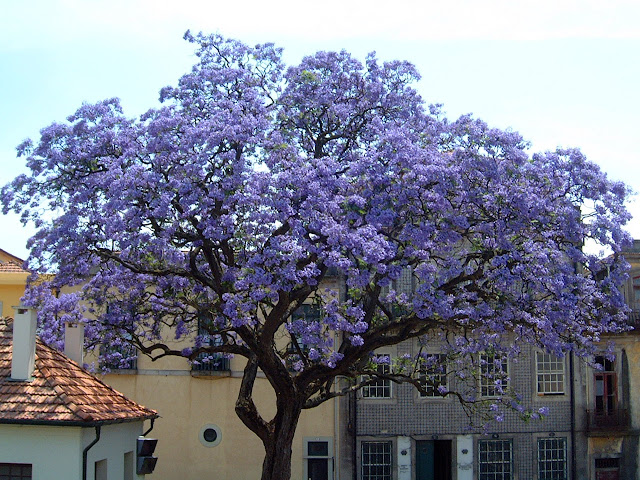 |
| Image credit - http://www.plants.com.pk/ |
I was in southern Spain when I came across my first, fully grown Foxglove tree - Paulownia tomentosa in flower. It was alongside the hot and dusty mud track that led to a field the holding the Thursday market. I remember it distinctly because the dramatic colour of those stunning bluish/violet flowers was so intense that it almost hurt my eyes to look at them! God's truth! And let's be honest, how often do you come across a bright blue tree?
 |
| Image credit - http://www.anniesannuals.com/ |
The foxglove tree is considered to be a small to medium sized tree growing to between 15-25 ft tall and 10-15 ft wide. They have an open, rounded habit.
Over the winter the foxglove tree has these fascinating brown-felted flower buds, but in exposed gardens these can become damaged.
The foxglove tree requires a sunny, sheltered position in a deep, well-drained, loamy soil. The best time to plant them is between October and March.
Normally, no pruning is necessary, but the foxglove tree is often grown as dot plants in in bedding or herbaceous schemes. If this is the case then they will need to be cut down to ground level each year in March. This will encourage vigorous shoots clad with exceptionally large leaves. However, these 'stooled' plants will not produce any flowering shoots.
For related articles click onto the following links:
AMAZING TREE FACTS
GROW PAULOWNIA TOMENTOSA SEED
HOW TO GROW THE BAOBAB TREE FROM SEED
HOW TO GROW THE FRANGIPANI TREE- Plumeria rubra var. acutifolia
HOW TO GROW LABURNUM x WATERERI 'VOSSII'
HOW TO GROW PAULOWNIA TOMENTOSA
How to grow Isoplexis canariensis
How to Grow the Sago Palm from Seed
THE CANNONBALL TREE - Couroupita guianensis
THE FOXGLOVE TREE
The Monkey Puzzle Tree - Araucaria araucana
The Tree peony -Paeonia suffruticosa
WALNUT TREES







No comments:
Post a Comment